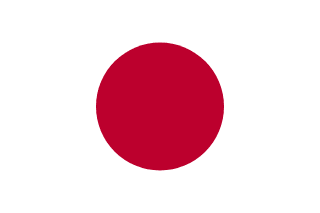Japan Flag Story

The Rising Sun flag: A symbol of tradition, culture, and national identity.
Colors: white, red
Pattern: White field with centered red circle
The Japanese Flag: Hinomaru
The Japanese flag, officially called Nisshōki (日章旗) but more commonly known as Hinomaru (日の丸), is a striking and simple design that has represented Japan for centuries. It features a red circle centered on a white background, symbolizing the rising sun.
History
The origins of the Japanese flag date back to the 7th century, but its official adoption is more recent:
- The use of the sun motif in Japanese heraldry can be traced to the Emperor Monmu in 701 CE.
- During the Meiji period (1868-1912), the Hinomaru was widely used as the national flag.
- On August 13, 1999, the National Flag and Anthem Law officially established the Hinomaru as Japan's national flag.
Design and Symbolism
The Japanese flag consists of a red disc centered on a white rectangular field:
- The red disc represents the sun, reflecting Japan's nickname "Land of the Rising Sun."
- The white background symbolizes purity and honesty.
- The flag's simple design is said to embody the unity and integrity of the Japanese people.
Cultural Significance
The Hinomaru holds deep cultural meaning for the Japanese people:
- It's displayed at official buildings, schools, and during national holidays.
- The flag is an essential element in many traditional and modern Japanese ceremonies.
- In sports events, particularly international competitions, the Hinomaru is a source of national pride.
- The flag's design has influenced various aspects of Japanese art and popular culture.
Interesting Facts
- The exact color of the red disc, known as "beni iro," is specified in the law as (R: 230, G: 0, B: 18) in the RGB color model.
- The flag's proportions are 2:3, with the diameter of the red disc being 3/5 the height of the flag.
- A variant of the flag, called the Rising Sun Flag (Kyokujitsu-ki), featuring sun rays, is used by the Japan Maritime Self-Defense Force.
- During the Edo period (1603-1868), it was illegal for ordinary people to hoist the Hinomaru flag.
The Hinomaru continues to be a powerful symbol of Japan's rich history, culture, and national identity, representing the country on the global stage.